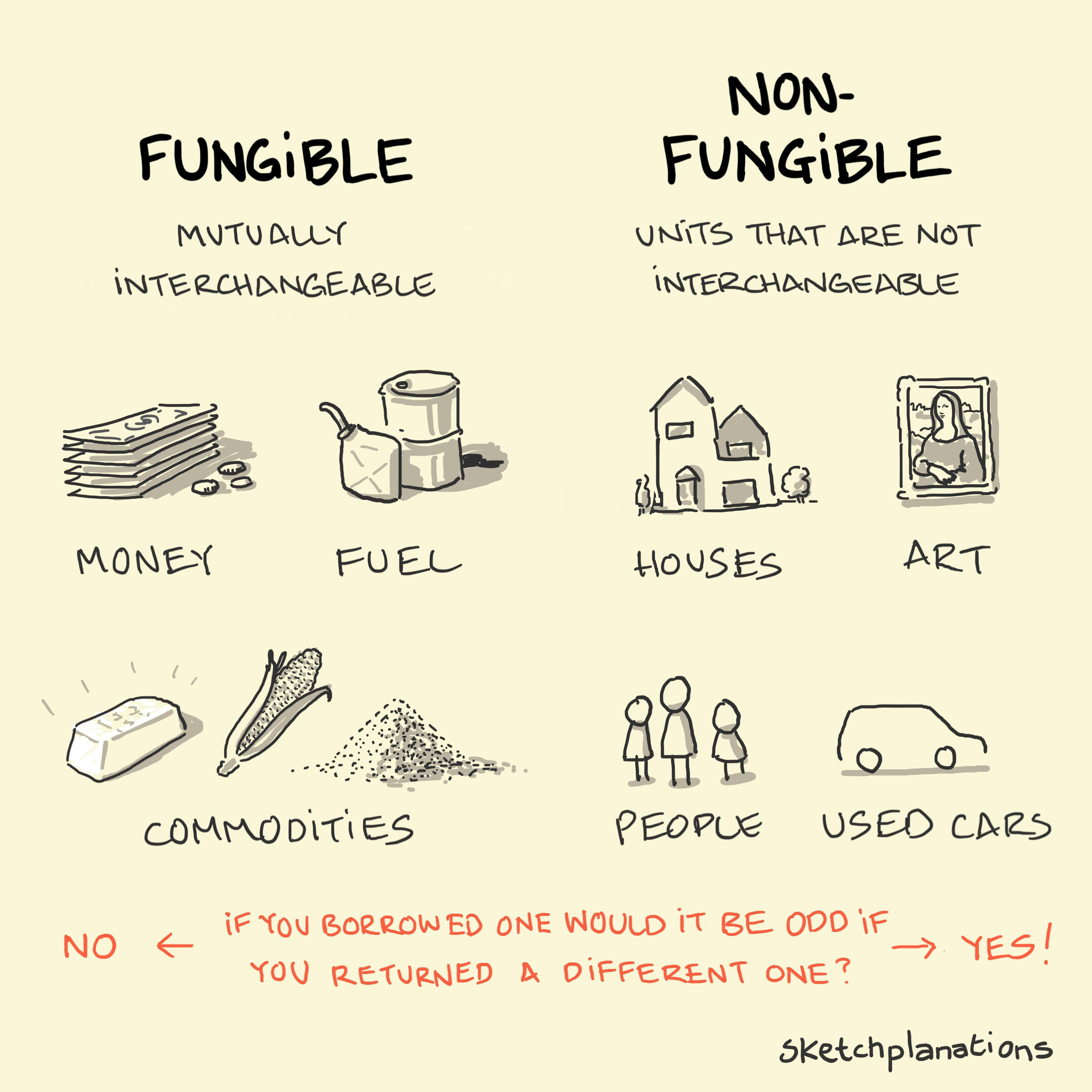Fungible - non-fungible

👇 Get new sketches each week
What are Fungible Goods?
Fungible goods are mutually interchangeable in that, in principle, you could swap in any unit for any other unit of the same type or kind, and it would be equivalent.
Money is a classic fungible good. A $10 bill is equivalent to any other $10 bill, so if you were to borrow $10 from someone, they wouldn't care or expect to get the same $10 bill back.
What are Non-Fungible Goods?
Non-fungible goods are unique and not mutually interchangeable. Each house, even cookie-cutter houses, is in a unique location with different neighbours, quirks, and histories.
A print of the Mona Lisa on your wall is not the same as having the original from the Louvre. Swapping people between work teams, even people with similar experience, will still result in different outcomes.
Distinguishing Fungible from Non-Fungible Goods
A nice thought experiment to distinguish fungible and non-fungible goods is to ask if, if you were to borrow one, it would make a difference if you returned a different one.
For example, if you were to borrow my car, you could return it to me with a different tank of fuel (a fungible good), and it wouldn't make any difference to me. But if you were to return a different used car (a non-fungible good), that would be rather odd.
What About NFTs?
If you've heard of NFTs (Non-Fungible Tokens) and would like to understand their flaws and promise better, I recommend the NFT Freakonomics episode of the 3-part series What can Blockchain do for you?
Related Ideas to Fungible and Non-fungible Goods
Also see:

